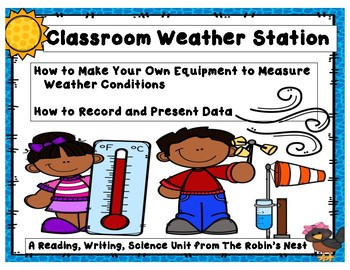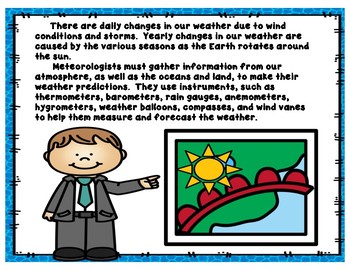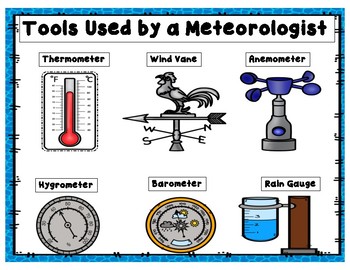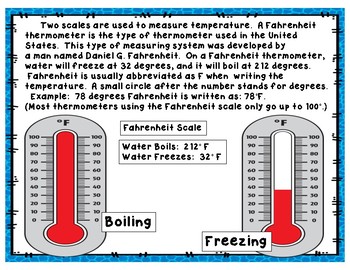Classroom Weather Station: Easy to Make Weather Equipment, Forecasting Weather
- PDF
Description
Weather affects ALL of us each and every day! This product is a wonderful way to introduce your students to instruments used to forecast the weather, as well as teach
kids how they can use the data they collect and observe to make their own weather forecasts! The equipment is very easy to make and materials are easily found around any household or at school. Also incorporates important math skills, such as
reading/writing the temperature in Celsius and Fahrenheit... and measurement with
a ruler in quarter inches, half inches, and inches! A great way to combine informative
reading with important math, science, and writing skills!
The product includes:
- An informative booklet for each student to read to learn about weather instruments,
cloud conditions, air pressure, warm and cold fronts, as well as humidity levels.
Contains important scientific vocabulary and concepts explained in kid friendly
language!
- A vocabulary notebook to run off for each of your students
- Meteorology vocabulary cards for pocket charts or for a bulletin board
- Colorful anchor charts
- Weather forecasting notebook for each student to record weather data collected
and to make weather forecasts
- Fun and educational weather related worksheets!
- Charts to record daily temperature readings!
- Easy, breezy directions for making your own weather equipment using materials
found in any household
- Bulletin board idea for a classroom weather map
- Prepared sentence strips to use on bulletin board
- Cards of weather symbols to laminate and post on weather board
- A fill in the blank weather forecasting script, so that each of your students get an
opportunity to act as "Classroom Meteorologist for the Day!"





